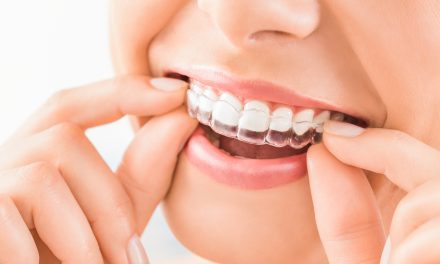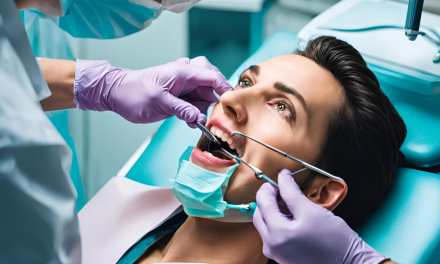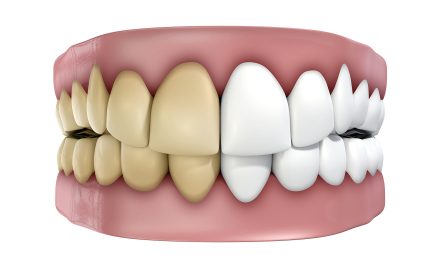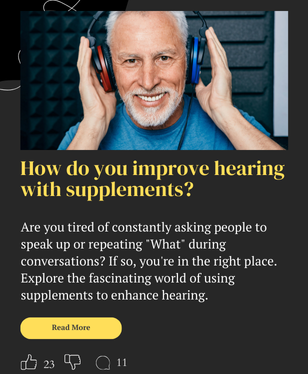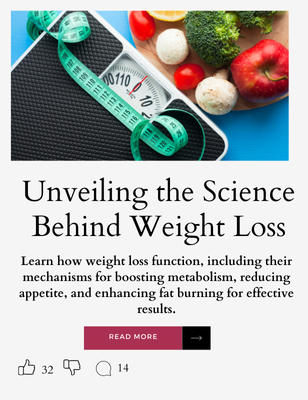Teaching dental health to preschoolers can be fun and engaging.
Activities for a dental health theme help young children learn about teeth and oral hygiene in a playful way. These lessons set the foundation for lifelong dental care habits.

Preschool dental health activities include brushing practice, creative crafts, and educational games that make learning about teeth enjoyable for young children.
Kids can explore tooth-themed sensory bins, make art projects with tooth shapes, and play dentist with dolls or stuffed animals. These hands-on experiences help preschoolers understand the importance of caring for their teeth.
Dental health themes in preschool often cover topics like proper brushing techniques, healthy foods for teeth, and what to expect at dentist visits.
By presenting this information through play and interactive lessons, teachers help young children develop positive attitudes about dental care from an early age.
Key Takeaways
- Dental health activities for preschoolers combine play and learning to teach oral hygiene basics
- Hands-on experiences help young children understand the importance of caring for their teeth
- Preschool dental health themes cover brushing, nutrition, and dentist visits through interactive lessons
Understanding Dental Health
Teaching preschoolers about dental health sets the foundation for lifelong oral care habits. Good dental practices prevent cavities and keep smiles bright.
Importance of Oral Hygiene
Oral hygiene is key for healthy teeth and gums. It stops plaque buildup, which can lead to tooth decay and gum disease.
Regular brushing removes food particles and bacteria. Flossing cleans between teeth where brushes can’t reach.
A balanced diet also helps keep teeth strong. Foods high in calcium, like milk and cheese, build strong enamel. Limiting sugary snacks reduces the risk of cavities.
Dental activities for preschoolers can make learning fun.
Kids can practice brushing on egg carton “teeth” or sort healthy and unhealthy foods for teeth.
Developing Healthy Dental Routines
Creating good dental habits early helps kids maintain them for life.
Teach preschoolers to brush twice daily – morning and night.
Show proper brushing technique: small circles on all tooth surfaces for two minutes. Use a pea-sized amount of fluoride toothpaste.
Make a tooth-brushing chart to track daily brushing. Offer stickers as rewards for consistent care.
Encourage regular dentist visits.
Role-play dentist check-ups to ease fears. Read books about dental visits to prepare kids.
Introduce flossing when kids can manage it. Floss picks are easier for small hands to use.
Effective Brushing Techniques
Teaching kids proper tooth brushing habits is crucial for their dental health. Fun activities can help make brushing enjoyable and encourage good oral hygiene routines.
Teaching Tooth Brushing
To teach effective brushing, use visual aids like oversized tooth models.
Demonstrate the correct brushing motion – small circles on all tooth surfaces. Explain that kids should brush for two minutes, twice a day.
Encourage kids to hold their toothbrush at a 45-degree angle to the gums. Teach them to gently brush back and forth on chewing surfaces. Remind them not to forget their tongue.
Use timers or songs about brushing teeth to ensure kids brush long enough.
The “Brush Your Teeth Song” can be a fun way to time the two-minute brushing session.
Making Brushing Fun
Transform tooth brushing into an exciting activity.
Create a brushing chart with stickers to track daily brushing. This visual tool motivates kids to maintain their routine.
Organize brushing parties where kids brush together.
Use colorful toothbrushes or ones with favorite characters. Let children pick their toothpaste flavor to make the experience more enjoyable.
Play brushing games like “Simon Says” with tooth brushing actions.
Use apps or videos that guide kids through proper brushing techniques. These interactive tools make learning fun and engaging.
Flossing Fundamentals
Teaching preschoolers about flossing is key for good dental health. Fun activities can help kids learn this important habit early on.
Practice Flossing with Preschoolers
To teach flossing, use simple models that kids can touch and explore. Make pretend teeth from playdough and place them in egg cartons. Put small objects between the “teeth” to represent food bits.
Give kids yarn or string to practice flossing.
Show them how to gently slide the “floss” between teeth. Let them try removing the objects stuck between the playdough teeth.
Another fun option is to use Duplo blocks as teeth.
Put playdough between the blocks and have kids floss it out with yarn. This hands-on method helps kids understand how flossing works.
Use simple words to explain why flossing matters. Tell kids it removes food and germs that brushing can’t reach. Praise their efforts as they practice.
Nutrition and Dental Health
What kids eat affects their teeth. Some foods help keep teeth strong and healthy. Other foods can harm teeth and cause cavities.
Healthy Foods for Healthy Teeth
Crunchy fruits and vegetables are great for teeth.
Apples, carrots, and celery help clean teeth as kids chew. They also make more spit, which washes away bits of food.
Cheese and yogurt have calcium to build strong teeth. Milk is also good for teeth. These dairy foods help protect tooth enamel.
Nuts and seeds have vitamins that keep gums healthy.
Almonds, pumpkin seeds, and sunflower seeds are good choices.
Water is the best drink for teeth. It rinses away food and bacteria.
Sugary drinks like soda and juice can cause cavities.
Preschool teachers can do fun activities about tooth-friendly foods.
Kids can sort pictures of foods into “good for teeth” and “bad for teeth” groups. They can also make pretend healthy meals using toy food.
Dental Health Learning Activities
Preschoolers can learn about dental health through fun literacy and math activities. These hands-on lessons help kids understand the importance of caring for their teeth while building key skills.
Incorporating Literacy Activities
Dental health literacy activities make learning about teeth fun.
Teachers can read books about going to the dentist or brushing teeth. Kids can practice letter recognition by matching uppercase and lowercase letters on paper teeth.
For a creative writing activity, children can draw pictures of healthy foods for teeth. They can then dictate or write simple sentences about their drawings. This helps build vocabulary related to dental care.
Another idea is to have kids sort picture cards of foods into “good for teeth” and “bad for teeth” categories. They can discuss why certain foods help or hurt teeth.
Fun with Dental Health Math Activities
Math skills blend seamlessly with dental health lessons.
Counting activities using small plastic teeth or toothbrushes help kids practice numbers. Teachers can make a large paper mouth and have children count the teeth.
For pattern recognition, kids can create toothbrush patterns using different colored craft sticks. They might make an AB pattern with red and blue “toothbrushes”.
Graphing activities work well too.
Children can survey classmates about their favorite toothpaste flavors and create a simple bar graph. This introduces data collection and representation.
Measuring activities can involve using non-standard units like toothbrushes to measure classroom objects. This builds early measurement concepts while keeping the dental theme.
Interactive Learning: Sensory and Fine Motor Skills
Preschoolers learn best through hands-on activities. Sensory play and fine motor tasks help kids explore dental health concepts in fun, engaging ways.
Sensory Bin Explorations
Dental health activities often use sensory bins to teach kids about oral care.
Teachers can fill bins with items like:
• White beans or rice to represent teeth
• Small toothbrushes
• Toy teeth or mouth models
• Floss
• Dental tools like mirrors
Kids sift through the bin, finding and sorting items. They practice brushing the toy teeth and flossing between them. This tactile play helps children get comfortable with dental tools and procedures.
Strengthening Fine Motor Coordination
Fine motor activities build hand strength needed for brushing.
Painting with toothbrushes lets kids practice proper grip and movements. They dip brushes in white paint to “clean” paper tooth cutouts.
Playdough also boosts coordination. Kids can:
• Make teeth shapes
• Press toothbrush bristles into dough
• Roll “floss” (string) between playdough teeth
Scissor skills improve through cutting out tooth shapes. Teachers draw lines on paper teeth for kids to cut along, building precision.
Creative Arts and Crafts
Arts and crafts help preschoolers learn about dental health through fun, hands-on activities. These projects engage young children’s creativity while teaching important lessons about teeth and oral hygiene.
Tooth Art Projects
Preschoolers can create tooth-themed art using various materials.
One idea is to paint a large paper tooth white. This simple activity reinforces the importance of keeping teeth clean.
Children can also make tooth mosaics using small white paper squares glued onto a tooth-shaped outline. This project helps improve fine motor skills.
Another fun option is marshmallow tooth art.
Kids glue marshmallows onto a paper mouth outline to represent teeth. This tactile activity is both enjoyable and educational.
DIY Model Mouth and Toothpaste Slime
Creating a model mouth helps children understand dental anatomy.
Teachers can guide students in making a mouth model using a plastic container. They can add play dough “gums” and small white objects for teeth.
Preschoolers can practice “brushing” their model teeth with a toothbrush. This hands-on activity reinforces proper brushing techniques.
Toothpaste slime is another engaging project.
Kids mix white glue, shaving cream, and baking soda to create a slime that resembles toothpaste. They can add mint extract for a realistic scent. This sensory activity is both fun and educational.
Educational Play and Pretend
Preschoolers learn best through play. Dental health themed activities let kids explore dentistry in a fun, hands-on way.
These activities build knowledge and reduce fear of dental visits.
Role-Playing as Dentists
Kids can dress up as dentists using lab coats, masks, and toy dental tools. Set up a pretend dental office with a chair and mirror.
Use dolls or stuffed animals as patients. Kids can practice counting teeth and showing proper brushing technique.
Make tooth-shaped name tags for each child to wear. This helps them get into character as dental professionals.
Provide toy toothbrushes, floss, and small cups to simulate dental cleanings.
Learning through Dramatic Play
Create a dental health play area with props like toothbrushes, dental charts, and x-rays. Kids can take turns being the dentist, hygienist, and patient.
This builds social skills and vocabulary.
Use puppets to act out dental visits. Kids can practice saying “ahh” and learn about dental procedures.
Read books about dentist visits to spark discussions. Encourage kids to share their own dental experiences.
Set up a pretend toothpaste store. Kids can practice counting and sorting different types of oral care products.
This combines math skills with dental health learning.
Songs and Games
Songs and games make dental health fun for preschoolers. They help kids learn about teeth in a playful way.
Engaging with the Alphabet Game
The alphabet game is a great way to teach dental health. Kids match letters to dental words.
For example, “B” is for brush and “F” is for floss.
Teachers can make tooth-shaped cards with letters. Students find objects in the classroom that start with each letter.
This helps them learn new dental words.
The game can be played in small groups or as a class. It’s a good way to mix dental health with early reading skills.
Singing ‘Brush Your Teeth’ Song
Singing about brushing teeth makes the task more fun. The “Brush Your Teeth” song is easy for kids to learn.
It has simple words and a catchy tune.
The song goes: “Brush your teeth, up and down. Brush your teeth, round and round. Brush your teeth, from left to right. Brush your teeth, in the morning and night.”
Kids can act out the motions while they sing. This helps them remember how to brush.
The song can be sung during tooth brushing time at school or home.
Science Experiments
Science experiments teach kids about dental health in fun, hands-on ways. These activities show how different substances affect teeth and demonstrate the importance of good oral hygiene.
Understanding Decay with the Egg Experiment
The egg experiment is a simple yet effective way to show preschoolers how sugary drinks can harm teeth. Soak eggs overnight in cups of soda, juice, coffee, or tea.
The next day, examine the stained eggs.
Try to brush the eggs clean with a toothbrush and toothpaste. This helps kids see why brushing is important.
You can also use vinegar to demonstrate tooth decay.
Compare the results of different liquids. Ask kids which drinks they think are best for teeth.
This activity sparks discussions about healthy drink choices.
Chemical Reactions and Elephant Toothpaste
Elephant toothpaste is a fun experiment that creates a foamy reaction kids love. It shows how chemical reactions work, similar to how toothpaste cleans teeth.
To make elephant toothpaste, mix:
- Warm water
- Dry yeast
- Hydrogen peroxide
- Dish soap
- Food coloring (optional)
The mixture will create a large, foamy “toothpaste” that pours out of the container.
This visual demonstration helps kids understand how toothpaste works to clean teeth.
Talk about how real toothpaste has special ingredients to fight germs and keep teeth strong. Let kids compare the texture of elephant toothpaste to real toothpaste.
Preparation for Dentist Visits
Getting kids ready for dental checkups helps make the experience positive. Kids can learn about oral health and feel more at ease with dentists.
What to Expect at the Dentist
A child’s first dentist visit usually happens around age 1. The dentist will check the child’s teeth and gums. They may also clean the teeth and apply fluoride.
Kids can play pretend dentist at home to get comfortable. Parents can use a toy toothbrush to count their child’s teeth.
This mimics what will happen at the real dentist.
The dentist’s office often has kid-friendly items like toys and books. These help children feel relaxed while waiting.
During the visit, the dentist will explain what they’re doing. They use simple words kids can understand.
Parents can stay with their child to offer comfort.
From Tooth Fairy to Reality
The Tooth Fairy is a fun way to teach kids about losing baby teeth. When a tooth falls out, kids place it under their pillow. The Tooth Fairy trades it for money or a small gift.
Parents can use this tradition to talk about real dental care. They can explain that the Tooth Fairy likes healthy teeth.
This encourages good brushing habits.
As kids grow, they learn the truth about the Tooth Fairy. Parents can then focus on the importance of dental health.
They can teach about adult teeth and why they need care.
Regular dentist visits become part of a child’s routine. Kids learn that dentists help keep their smiles bright and healthy.
Frequently Asked Questions
Preschool teachers have many options for teaching dental health. Free activities, printables, lesson plans, and fun learning games can help make the topic engaging for young children.
What free activities can preschoolers do to learn about dental health?
Preschoolers can paint a tooth white to learn about keeping teeth clean. They can also use toothbrushes to paint pictures, reinforcing proper brushing motions.
Playdough activities let kids pretend to be dentists. They can make teeth shapes and practice “cleaning” them with small toothbrushes.
Where can I find free printable dental health activities for preschoolers?
Many websites offer free dental health printables for preschoolers. These often include coloring pages of teeth, toothbrushes, and dentists.
Counting and matching games help kids learn numbers while exploring dental themes. Tooth-shaped worksheets allow for both fine motor practice and dental education.
How can I create a dental health lesson plan for my preschool classroom?
Start with a mix of hands-on activities and educational games. Include art projects like tooth painting and sensory play with playdough “teeth.”
Add science experiments showing how different drinks affect teeth. Use eggs soaked in soda or vinegar to demonstrate staining and decay.
What are some effective dental health activities suitable for kindergarteners?
Kindergarteners can benefit from more advanced activities. They might enjoy sorting healthy and unhealthy foods for teeth using picture cards.
Egg staining experiments work well for this age group. Kids can observe how different drinks affect eggshells, which are similar to tooth enamel.
How can I incorporate counting teeth into a fun learning activity for preschoolers?
Use egg cartons as pretend mouths. Kids can count the “teeth” and place small objects like beans or pom-poms in each space.
Create a large tooth-counting graph on the wall. Children can add marshmallows or cotton balls to represent teeth, practicing counting skills.
What sensory activities can help preschoolers understand dental health?
Set up a sensory table with dental tools like toothbrushes, floss, and child-safe dental mirrors.
Kids can explore these items hands-on.
Use playdough to create teeth with “cavities.”
Children can then practice removing the cavities with toothbrush-shaped tools.








